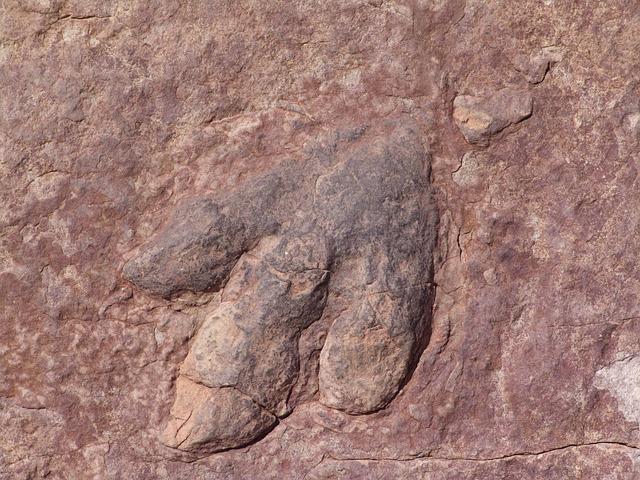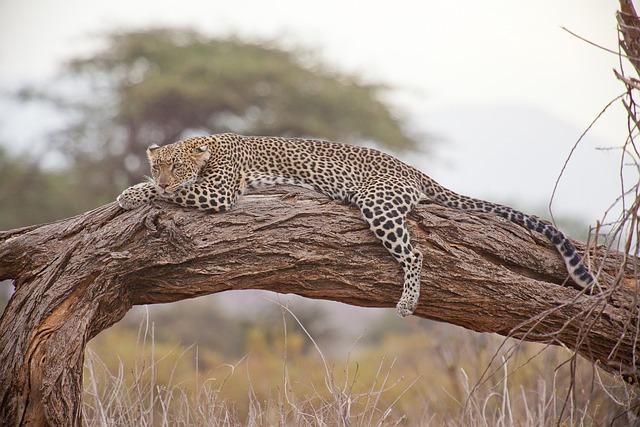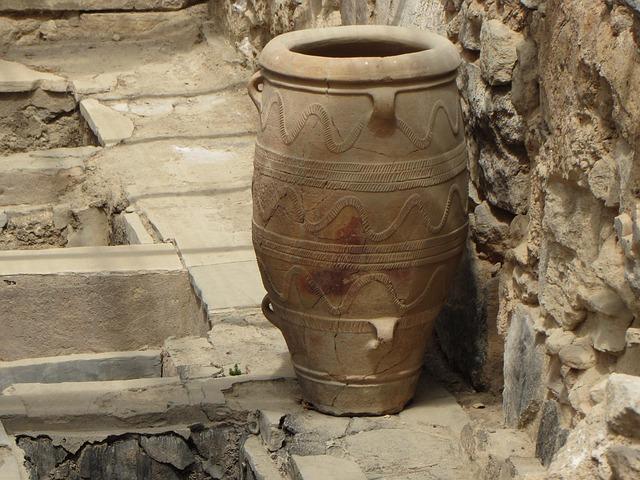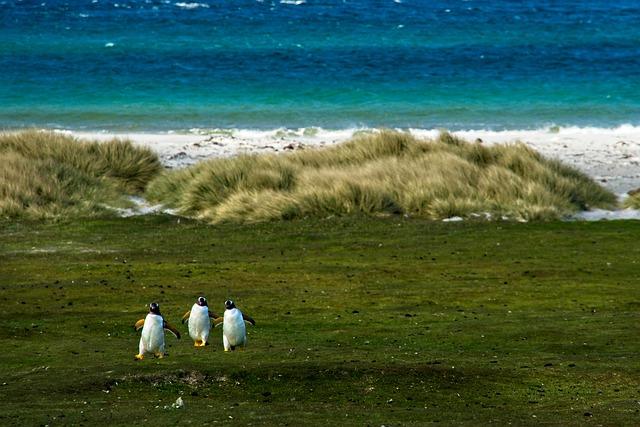in a groundbreaking discovering that illuminates the complexity of early human evolution, researchers in Kenya have unearthed fossilized footprints revealing the coexistence of two distinct historic human species. This notable discovering provides new insights into the behaviors and interactions of early hominins,suggesting a wealthy tapestry of existence throughout a length in the past regarded as ruled via a singular species. The footprints, relationship again roughly 1.5 million years, supply priceless proof of the varied ecosystems through which our ancestors thrived, highlighting the intricate internet of survival methods hired via early people. As scientists proceed to investigate those exceptional strains, the revelations rising from this web page stand to reshape our figuring out of human ancestry and the dynamics that formed our evolutionary trail.
Fossil Discovery Highlights Coexistence of Historical Human Species in Kenya
the hot discovery of fossilized footprints in Kenya has shocked the clinical group, losing mild on the complicated interactions between early hominins. Those historic prints illustrate that two distinct species walked the identical terrain roughly 1.5 million years in the past. Archaeologists consider those species come with Homo erectus, recognized for his or her complicated use of gear and flexibility, and every other species that would possibly constitute a lesser-known hominin.The findings indicate a shared surroundings,elevating questions on their social interactions and survival methods.
This revelation emphasizes the significance of Kenya’s geological panorama as a wealthy repository of human ancestry.The tracks supply proof of more than a few behaviors together with:
- Looking methods: Imaginable cooperation or pageant in in quest of meals assets.
- Habitat personal tastes: Insights into how other species tailored to their setting.
- Social constructions: Doable implications of coexistence on social dynamics.
Additional analysis will indisputably expose extra about those historic beings and their interactions. Figuring out this interaction may reshape our narrative of human evolution, giving us deeper insights into how numerous species tailored to shared landscapes.

Fossil footprints function exceptional home windows into the previous, losing mild at the lives and behaviors of early human species. The new discovery in Kenya highlights the lifestyles of two distinct hominin species that coexisted, providing priceless insights into social constructions, migration patterns, or even interactions between species. Those footprints permit researchers to interpret very important sides of day-to-day existence, together with:
- Locomotion: The dimensions and form of the footprints can counsel whether or not people had been bipedal, offering clues to their mobility and flexibility.
- Workforce dynamics: Patterns within the footprints would possibly expose whether or not those early people traveled on my own or in teams, indicating social group and communal residing.
- Environmental interplay: The kind of terrain and surrounding plant life will also be inferred from the footprint context, illustrating how early people tailored to their surroundings.
Additionally, examining those footprints with trendy generation lets in for a deeper figuring out of ways other species would possibly have interacted in shared habitats.Comparative research of the footprints can lead to the introduction of a timeline that displays no longer simply coexistence however additionally probably aggressive or cooperative relationships. This very important knowledge is helping to fill gaps in the evolutionary narrative of people, demonstrating that:
| Species | Footprint Traits | Implications |
|---|---|---|
| Species A | Huge, tough prints | Probably robust and dominant, perhaps a predator |
| Species B | Smaller, extra refined prints | Most likely agile and tailored for evasion |
This dynamic exploration of our ancestral previous fosters a better figuring out of human evolution, suggesting that the narrative of our lineage is one of complexity and interspecies relationships fairly than an easy story of growth.
The Position of Kenya’s Paleontological Websites in uncovering Human Ancestry

Kenya’s wealthy paleontological websites have lengthy been known as crucial to figuring out human evolution. Fresh discoveries, specifically of historic fossil footprints, supply groundbreaking insights into the coexistence of more than one human species. This proof suggests that two distinct hominin species walked the Earth concurrently, difficult earlier notions about early human expansion and migration patterns.The footprints discovered within the wealthy deposits of puts like Laetoli no longer simplest expose the bodily traits of those historic beings but in addition trace at their behaviors,social constructions,and interactions with every different and their surroundings.
Key findings from those websites spotlight exceptional sides of early human existence:
- Measurement Permutations: Footprints point out variations in stature and foot morphology, suggesting a range in bodily variations.
- Behavioral Insights: The association and intensity of footsteps supply clues in regards to the social dynamics between those species, perhaps indicating communal or solitary actions.
- Environmental Context: Proof connected to the footprints offers insights into the local weather and ecosystem, losing mild at the habitats through which those early people thrived.
| Species | Notable Characteristics | estimated Time-frame |
|---|---|---|
| Homo sapiens | Upper cranial capability, proof of device use | 300,000 years in the past |
| Homo erectus | Longer limbs, indicative of bipedalism | 1.9 million years in the past |
Implications for Human Migration Patterns and species Interplay

The invention of historic human footprints in Kenya, revealing the coexistence of 2 distinct species, provides profound insights into previous human migration patterns and the way those will have influenced species interplay. This proof signifies that early people had been no longer remoted however fairly cohabited the similar environments,main to attainable interactions that will have facilitated the change of behaviors,gear,and survival methods. Such encounters may have formed the adaptive characteristics in each species, prompting shifts in migration routes as they adopted to be had assets and sought to keep away from pageant. Figuring out those dynamics offers researchers a clearer image of ways early human populations dispersed throughout areas.
Additionally, the consequences lengthen past human interactions; in addition they counsel a broader ecological context through which those species thrived. The behavior and migrations of early people most likely influenced native fauna and plant life, growing a fancy internet of interactions. Key penalties of those interactions come with:
- Disruption of Species Patterns: The creation of 1 species would possibly have altered searching patterns of native natural world or presented new pageant,affecting survival charges.
- Cultural Trade: Coexistence may have led to shared wisdom that stepped forward tool-making ways or useful resource usage.
- Environmental Affect: As human populations migrated, their foraging and agreement methods may have led to shifts in native ecosystems.
Let’s say the relationships between early people and their surroundings, the desk under summarizes attainable species interactions according to footprint proof:
| Species Interplay | Imaginable Affect |
|---|---|
| Festival for Sources | Might result in migration or adaptation methods. |
| Co-hunting Practices | Advanced good fortune in securing meals. |
| Cultural Studying | Developments in tool-making. |
conservation Methods for Retaining Necessary Archaeological Websites

Retaining archaeological websites is an crucial process for each cultural heritage and clinical inquiry. Efficient conservation methods contain a mix of proactive measures to offer protection to those websites from environmental threats, human interference, and decay. To succeed in this, it is very important to put into effect built-in control plans that contain native communities, researchers, and policymakers.Neighborhood engagement guarantees that the peopel residing in proximity to archaeological websites transform lively stewards in their heritage,fostering a sense of possession and duty.
A number of key approaches will also be followed to verify the longevity of seriously necessary archaeological websites:
- Prison Coverage: Organising criminal frameworks that specify sure spaces as secure zones can undoubtedly assist deter unauthorized excavations and construction.
- Tracking and Upkeep: Common tracking of web sites the usage of complicated applied sciences,akin to drones and far flung sensing,allows rapid responses to any threats posed via herbal or human actions.
- Public Consciousness Campaigns: Teaching the public in regards to the importance of those websites promotes give a boost to for conservation efforts and encourages accountable tourism.
| Technique | Description |
|---|---|
| Neighborhood Involvement | Enticing native citizens in conservation roles and academic projects. |
| Enduring Tourism | Selling accountable tourism practices that decrease environmental have an effect on. |
| Analysis Collaboration | Partnering with educational establishments for ongoing find out about and preservation ways. |
Long term Analysis Instructions on Historical Human Habitats and Behaviors

The invention of fossil footprints in Kenya has opened new avenues for figuring out the interactions between historic human species. Long term analysis must focal point at the patterns of coexistence and pageant between those hominins, specifically analyzing the environmental stipulations that allowed for this sort of distinctive state of affairs. Key spaces of exam would possibly come with:
- Ecological Components: Inspecting the wildlife of the area throughout the time of coexistence to determine meals assets and habitat preferences.
- Social Constructions: Exploring attainable social dynamics, workforce behaviors, and territorial disputes that might have influenced the connection between those species.
- Migration patterns: Investigating how migration and mobility formed the interactions between ancients and their environments.
In addition,strategies like complicated imaging and molecular research of the footprints can provide deeper insights into the bodily functions and strolling types of those species. This sort of interdisciplinary manner can improve our figuring out of ways historic people tailored to their setting. Additional analysis projects may believe making a collaborative database that catalogs findings from more than a few websites, presenting a clearer image of human evolution and the variety of historic habitats. The sort of database may come with:
| Analysis Focal point | Doable Findings | Tactics |
|---|---|---|
| Footprint Research | Motion patterns and interactions | 3-d Scanning |
| Paleoenvironment Research | Habitat personal tastes | Geochemical Research |
| Cultural Artifact Restoration | Social group insights | Box Excavation |
Ultimate Ideas
the invention of fossil footprints in Kenya supplies an extraordinary glimpse into the lives of our historic ancestors, revealing that two distinct human species coexisted in the similar habitat over 1.5 million years in the past. This discovering no longer simplest complements our figuring out of human evolution but in addition activates additional inquiry into the social dynamics and environmental variations of early hominins. As researchers proceed to investigate those exceptional strains, the consequences for our wisdom of human historical past proceed to make bigger, illuminating a fancy internet of interactions and shared environments that formed the trail of our species. The ongoing find out about of those footprints underscores the importance of fossil proof in piecing in combination the narrative of human ancestry and highlights the rich archaeological heritage of East Africa.
Source link : https://afric.news/2025/03/07/fossil-footprints-in-kenya-show-two-ancient-human-species-coexisted-reuters/
Creator : Victoria Jones
Post date : 2025-03-07 00:37:00
Copyright for syndicated content material belongs to the connected Source.



